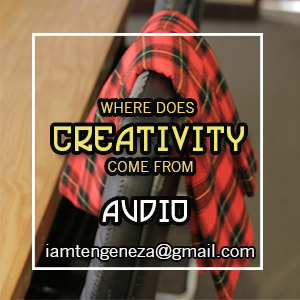The Opening
I bought this book in a ghetto garage sale years ago. Doris Wallace and Howard Gruber write the book and Oxford University Presses were the publishers in 1989. It has an Academic slant. You can tell from its subtitle – Twelve Cognitive Case Studies.
The Main Thesis
To summarize the book’s thesis from the authors they say “ Our Book is about how creative people do what they do”
Since it is a scholarly exploration they aim to do three things in this book. To look for a unifying approach to creative work taking account of the diversity of the creative they have studied.
They also seek to examine the uniqueness of each creative, and their contribution to study of creativity.
Lastly they do the first and the second through selective case studies of twelve artists, who include, William Wordsworth, Michael Faraday, Charles Darwin, William James, Albert Einstein, and Melisa Zink amongst many others.
You may notice from the names that most of these are not people we may conventionally refer to as creative. In fact there are scientists thrown in there maybe to allude to the fact that, their scientific results came through a creative journey.
Some Major Questions
In their research they are answering some questions
- The Evolution of Creative work over time and it’s systems. They mention the constant interplay between purpose, play and chance.
- The Pluralistic approach to creativity namely insights, metaphors, social relationships, projects and so forth.
- The interactive aspect where the creative person operates within a historic, societal and institutional framework.
All in the entire book is a legible albeit scientific in the research sense of the word but about a topic we all care about CREATIVITY.
Some Quotes from the Book
We suppose that creative work is always progressive in the sense that it is new, that it builds on the predecessors, in some way or the other going beyond them. – Sir Isaac Newton
Purposeful work that does not take cognizance of the chanciness of the world, including the inner world, will not lead to creative outcomes.
Creative work is peculiar in relation to two issues. It puts a premium on innovation and must consequently be organized so as to accept the risks of disruption, delay and failure. But it can reduce some of these risks by developing a specialized organization into subtasks. The organization is not given to the creative person, but it is something he or she must construct in the course of living and working.
I like that the work of creativity in this book. It has borrowed from case studies of people you would have never classified to be creative. It may seem from the start like a hard read but if you are patient and progressive it unpacks deep insights into the process of Creativity.
I recommend that one reads it in systematic and planned out munch able bites. It will be in order to end with quote from the book.
The difficulty of Creative work leads in turn to the characteristic duration of the task. It is long hard work. Sometimes the last steps of the creative process look easy; confusing this place with the process as a whole can lead to exaggerated ideas of its spontaneity and ease.
Look for it on Amazon and Google Books to order a copy.
Last modified: March 11, 2022


 Tengeneza in Swahili language means to Make or to Create. Making in the deep sense of the word is securely founded on the idea of narrative. Every one who makes has a story. Tengeneza seeks to explore creative ideas and the process by which these ideas come to see the light of day irrespective of the raw materials used to make them. – email us at iamtengeneza@gmail.com
Tengeneza in Swahili language means to Make or to Create. Making in the deep sense of the word is securely founded on the idea of narrative. Every one who makes has a story. Tengeneza seeks to explore creative ideas and the process by which these ideas come to see the light of day irrespective of the raw materials used to make them. – email us at iamtengeneza@gmail.com

